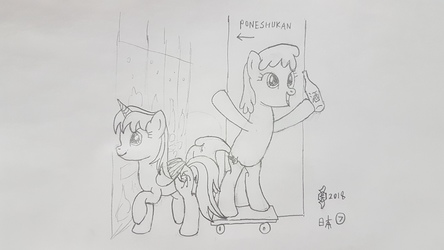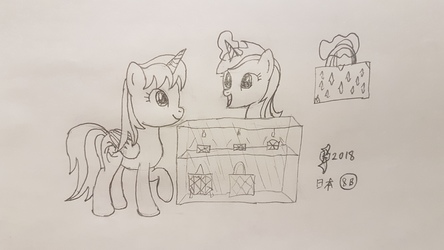Sign In
CloseSpindle: There are a lot of attractions in and around Niigata that we necessarily had to miss because of scheduling constraints or bad weather. These include the Bandai Bridge, featured on the city's custom sewer cover, and its customs house which was used in the period surrounding the Meiji Restoration. However, we aimed ourselves at exotic things we loved as much as possible.
Parcly: My breakfast was a wing-shaped chicken bread from Vie de France (whose logo is a French flag with a thin white stripe) and two glasses of milk. Checking out, I hopped onto the Dormy Inn's shuttle bus to Niigata Station alongside other passengers; it took some time to load and unload my luggage. From there I boarded Toki No. 314 departing at 9:20 for Tokyo.
Japan was the first country to have a high-speed rail service with the Tōkaidō Shinkansen, and its model was exported to other countries. What makes the version here unique is the high frequency of high-speed trains, comparable to regular trains in quieter places, although China has pulled out all the stops in developing its own high-speed network, rails crawling across huge expanses of open land at nearly the trains' speeds themselves.
Mistmane: The first time I rode a train after awakening from limbo, whoosh! Yet things started slow in Japan, where technologies and raw materials had to be imported after its opening to foreign trade. Trains emerged as the most efficient means of moving ponies around and were prioritised, leaving an indelible mark on transport infrastructure even after cars became vogue. Self-sufficiency was achieved early on, further enhancing technical and onboard service quality.
Spindle: JR services also retain a very high level of English translations, from the time when they served as unofficial tourism ambassadors in the Japanese National Railways era.
I saw more snowy scenes in the first half of our journey inwards into Tokyo, cars moving in isolation among frozen fields and rooftops reflecting sunlight like daytime flares – not to mention mountains looking like huge ice crystals. Behind Parcly's reserved seat I heard other passengers making small talk, stopping as the train entered Echigo-Yuzawa.
Mistmane: Another odd flower in Japan's train network is track gauge. Standard JR trains use a 1067 mm (3.5 ft) gauge, unlike all other trains in Japan (i.e. Shinkansen and private railways) that use standard 1435 mm gauge. Perhaps this is because the former gauge was the first one introduced into the country, by Edmund Morel who built rails of the same gauge in New Zealand, which has similar terrain to Japan's.
Parcly: We entered one tunnel seeing snow and came out seeing lush, green grass, signifying that we had crossed the central mountains into Japan's southern coast. From there houses squeezed together, then shot up and became high-rises: here lay Tokyo, arriving at 11:27. A distant silhouette of the Skytree served as a discreet welcome.
Passageways in the Tokyo Main complex introduced us to Ōtemachi (大手町) and the confusing world of the Tokyo subway system. I boarded the Tōzai Line (東西線) to Nishi-kasai (西葛西), then alighted and boarded the next train after seeing on video screens that the previous train was a rapid service skipping Nishi-kasai. My accommodation was a short distance away from this last station.
Spindle: Brief rest aside, Parcly took dips in her bottle, one body part at a time, as a quick way to destress before exploring the streets. Dipping her torso was the hardest, accomplishable only by standing above and then falling onto the mouth, like a trampoline in tension.
Parcly: It's a strange manoeuvre, with your hooves straightening the "wrong" way, but it works!
Submission Information
- Views:
- 398
- Comments:
- 0
- Favorites:
- 1
- Rating:
- General
- Category:
- Visual / Traditional




